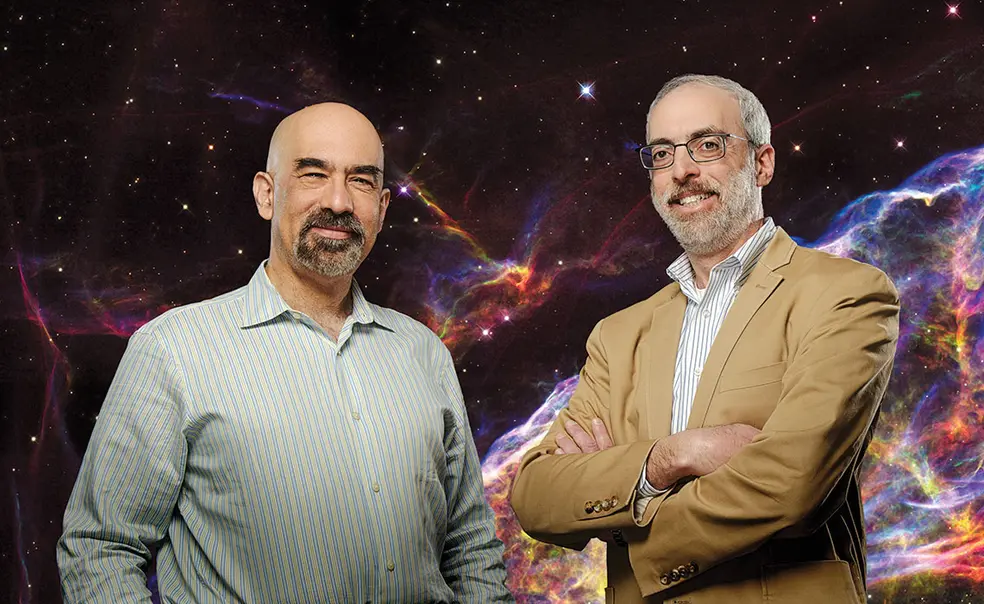Two Princeton professors will be at the center of an ambitious mission to answer two of our most important cosmological questions: What is the nature of the universe, and are we alone out here? Sometime in the next decade, NASA plans to launch a new high-powered space probe called the Wide-Field Infrared Survey Telescope (WFIRST) to a spot some 1 million miles from Earth. The massive telescope will scan the surrounding universe with two main objectives: to study a mysterious matter known as “dark energy,” led by astronomy professor David Spergel ’82; and to measure the light from distant planets, led by mechanical and aerospace engineering professor N. Jeremy Kasdin ’85.
A PAW cover story March 18, 2015, described work by Kasdin to design tools to spot and capture images of planets around distant stars. The WFIRST mission is expected to draw heavily on that research.
Dark energy is the name scientists have given to an invisible matter that may constitute 70 percent of the known universe and is thought to be responsible for the universe’s accelerating expansion since the Big Bang some 13 billion years ago. “Physicists are struggling to understand why the expansion rate of the universe is accelerating,” Spergel says. “We expect that gravity should be slowing the expansion.” Dark energy would provide one possible explanation for the conundrum — the other being that Einstein’s theory of general relativity doesn’t apply to cosmological scales.
In order to study the phenomenon, the mission will make use of a telescope as powerful as the Hubble Space Telescope, able to examine light 11 billion light-years away. Initially, scientists involved in the project believed the telescope was ill-configured for the mission’s other main objective: to study the light of planets far outside our solar system. Kasdin and operations research professor Robert Vanderbei were able to retrofit the telescope with a coronagraph, a device that can separate the light reflecting off a planet from the light of the star it is orbiting.
The instrument will allow for sensitive light readings, which can give information about the atmosphere and chemical composition of planets much farther away than those astronomers currently can study. That, in turn, could aid in the discovery of an elusive “Goldilocks planet” — theoretically, at least — that is just right to support life. “It will get us nearer to the answer of whether we are alone in the universe,” says Kasdin. Questions don’t get much bigger than that.












No responses yet